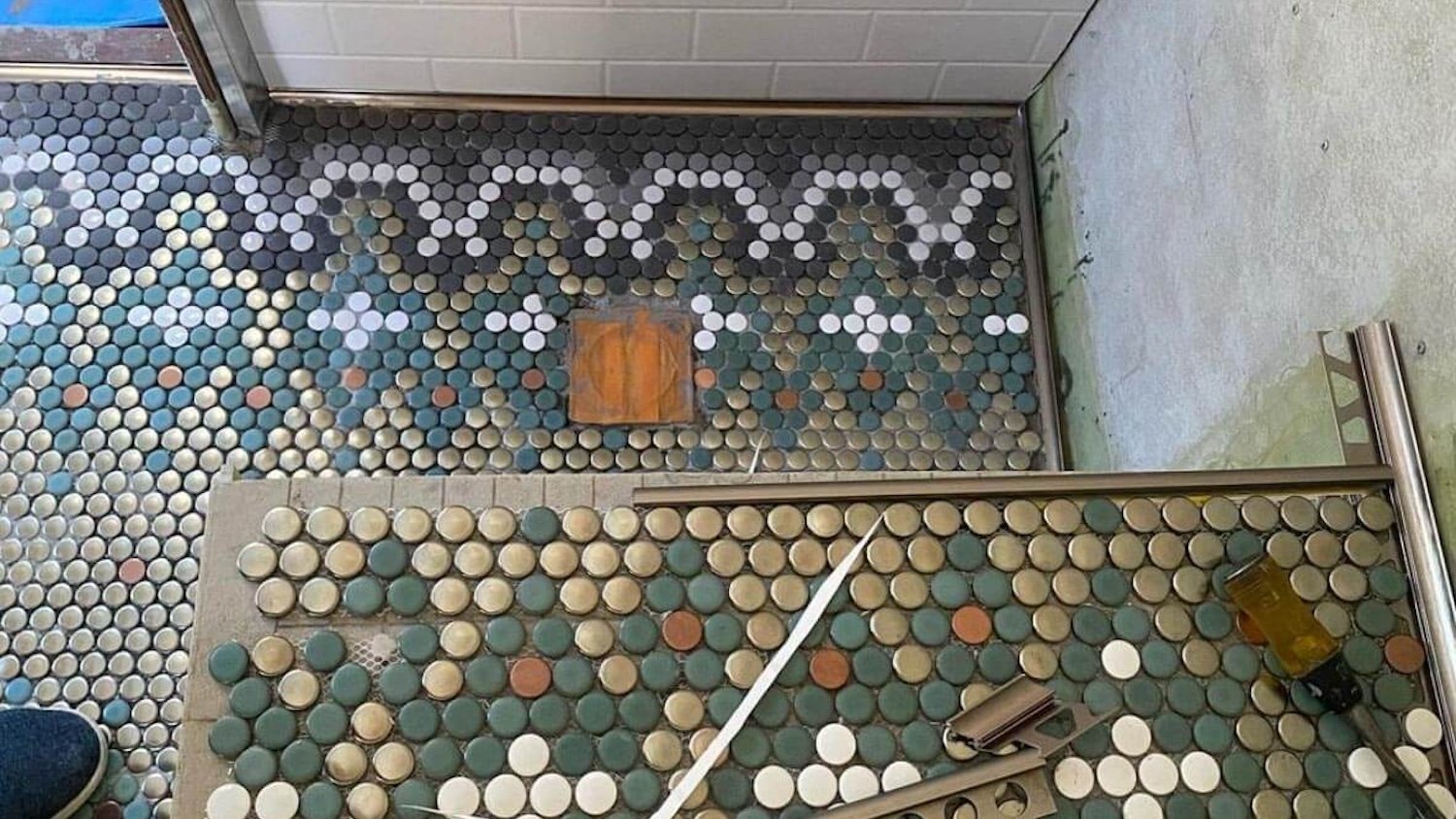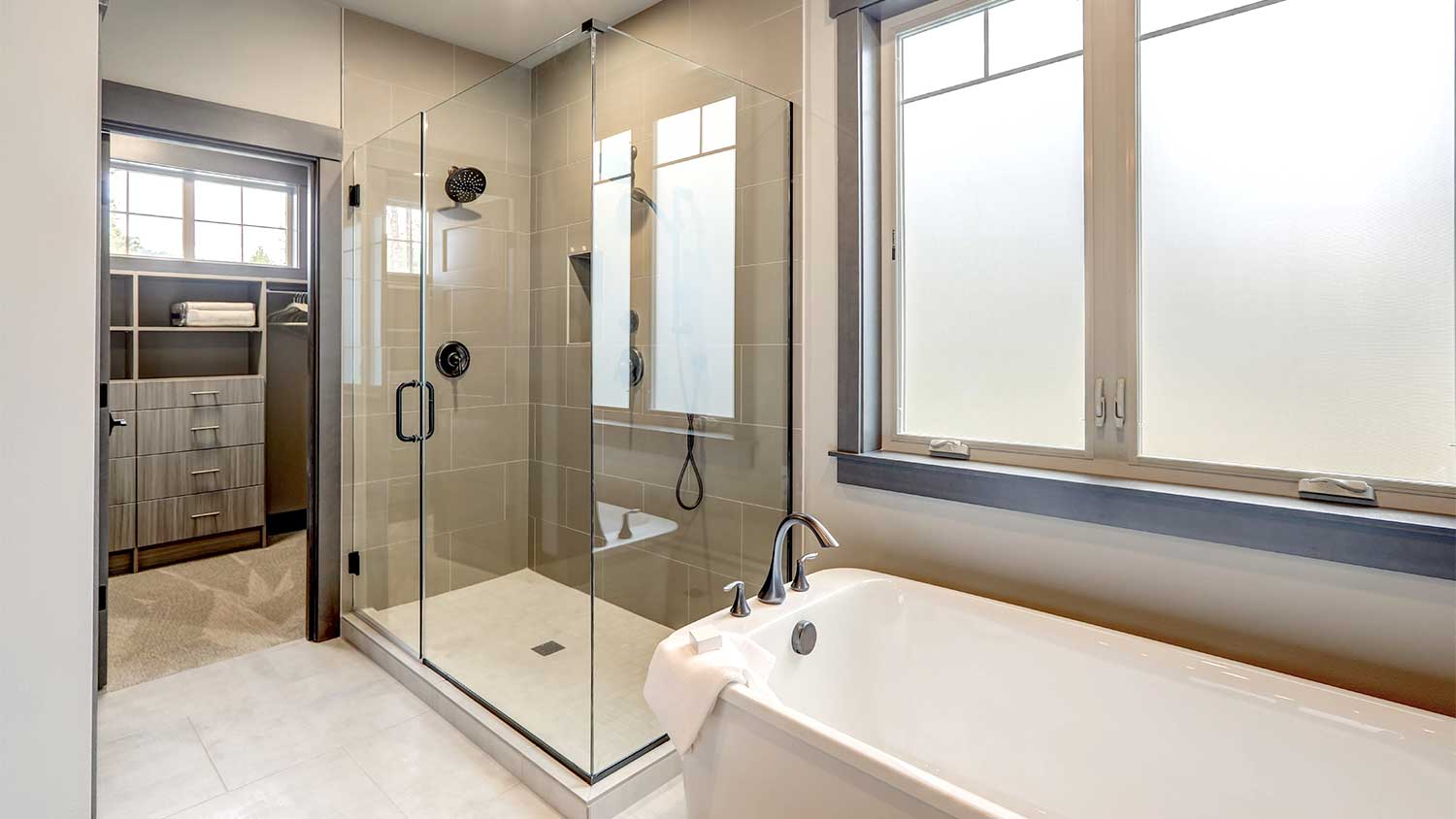
How much does a showerhead cost? Whether your current showerhead is broken or you want more pressure, you have many options to upgrade your showering experience. Learn the average price for various showerheads, features, and more.
Here’s our two cents on penny tiling


Penny tiles are small, round tiles with a diameter of about 3/4-inch.
The size of penny tile makes it great for custom designs and intricate patterns.
Textured or matte penny tiles offer better slip resistance on shower and bathroom floors.
Penny tile can last 60–100 years or more with proper installation and upkeep.
Cleaning penny tile can be difficult because of all the small grout lines.
As you prepare for your bathroom renovation, you may be considering penny tiles as a charming alternative to the trendy subway or marble tile you see everywhere. Penny tiles have been popular for decades because they’re versatile, lend well to customized designs, and last for years. However, the drawbacks of penny tiles include difficult installation and higher maintenance compared to larger tiles. Consider these pros and cons of penny tile to determine whether they’re right for your shower floor, walls, or backsplash.
Penny tile is a type of tile named for its resemblance to a coin, the U.S. penny. Each penny tile is round and about 3/4-inch wide. Penny tiles can be made from many different materials, including ceramic, porcelain, glass, or natural stone, and they come in a wide range of colors.
| Pros of Penny Tile | Cons of Penny Tile |
|---|---|
| Versatile styles | Require frequent cleaning |
| Long-lasting | Time-consuming installation |
| Customizable designs | May be slippery when wet |

Penny tiles have long been a popular option, especially for tiling bathrooms. Here are some benefits of installing penny tile on your shower floor or other spaces.
Penny tiles come in a wide range of materials and colors to match all types of interior design styles. Go nautical with navy blue and white penny tiles, or strike a modern look with black, white, and gray penny tiles.
You can even go bold in bright hues or opt for a neutral look in earthy tones or penny tiles made from stone or glass. Plus, with the wide range of grout color options available, you can really make any color or type of penny tile stand out or blend in with your aesthetic.
You may be familiar with seeing penny tiles in Victorian-era homes, which just goes to show how durable and long-lasting these tile floors can be. Penny tiles can be made from porcelain, ceramic, stone, glass, or other materials, and the material and proper installation and upkeep determine their longevity. With regular maintenance, penny tiles will last 60 to 100 years or more.
Because these tiles are so small, they’re easy to lay into unique patterns and designs. You can even install penny tiles to spell out fun words or phrases, like “splash” in a tiled tub and shower or “wash” on the floor by a bathroom sink.

Penny tiles do have some drawbacks to consider, especially when it comes to installing and maintaining these tiny tiles.
When you see all those small tiles, you may wonder, “Is penny tile hard to clean?” All those grout lines need a good scrub to prevent mold and mildew growth, so make sure to keep up with frequent cleanings. Also, penny tile grout does require regular resealing from a seasoned tile pro.
Most people only seal their grout once, but you should have a pro reseal grout and tile annually for maximum performance and longevity. Doing so also keeps out moisture and prevents staining and discoloration.
Look at your bathroom and shower and think about how many little penny tiles you’ll need in order to cover the space. Daunting, isn’t it? Installing so many tiles, especially in intricate designs, requires a lot of time, patience, and proper tools to make sure the tiles are even and sturdy.
Penny tiles made from glass, stone, or polished ceramic or porcelain can all be slick, especially if they’re in a shower. Choose the appropriate material depending on where you plan to place the penny tiles.
Penny tiles on shower floors need extra special consideration. Some penny tile materials, like matte or textured ceramic or porcelain, are less slippery when wet, so consider these if you’re upgrading your shower.
Maybe you’re not interested in the frequent upkeep for penny tiles or don’t have the extra time to spare for installation. Fortunately, there are plenty of other unique types of tile that will work well for shower floors, bathrooms, or walls. Some alternatives to penny tile include:
Hexagon tiles
Mosaic tiles
Subway tiles
Basketweave tiles
Choosing penny tile for a bathroom or shower ultimately depends on what look you’re trying to achieve, your budget, and your availability for maintenance. Here are some factors to consider when choosing penny tile:
Customization: Penny tile is a great choice if you’re looking to create an intricate design. The small tiles work well for making patterns or even having fun with some wordplay.
Slip resistance: For a shower floor, you may want to choose penny tile in a less slippery material, like textured ceramic or porcelain.
Maintenance: All tiles need cleaning, but penny tiles require a little more TLC to stay in good shape. If you’re down with the added upkeep, this can be a good choice for your bathroom.
Installation: Penny tile takes longer to install because it’s so small. Make sure you clear your schedule, or better yet, hire a tile contractor near you to get the job done.
From average costs to expert advice, get all the answers you need to get your job done.

How much does a showerhead cost? Whether your current showerhead is broken or you want more pressure, you have many options to upgrade your showering experience. Learn the average price for various showerheads, features, and more.

Building a guest house is one of the largest home projects and involves several different professionals. Learn about the cost to build a guest house and where you can save.

Thinking of getting rid of that old bathtub and replacing it with a walk-in shower? This walk-in shower cost guide will help you plan your budget.

DIY sink installation is a doozy but do-able for those with experience. Use this guide to learn how to install a bathroom sink in a few steps.

An updated bathtub can give a bathroom a whole new look. Find out how much it costs to replace a bathtub in Charlotte, NC, including prices by type and labor costs.

An updated bathtub can give a bathroom a whole new look. Find out how much it costs to replace a bathtub in Denver, CO, including prices by type and labor costs.